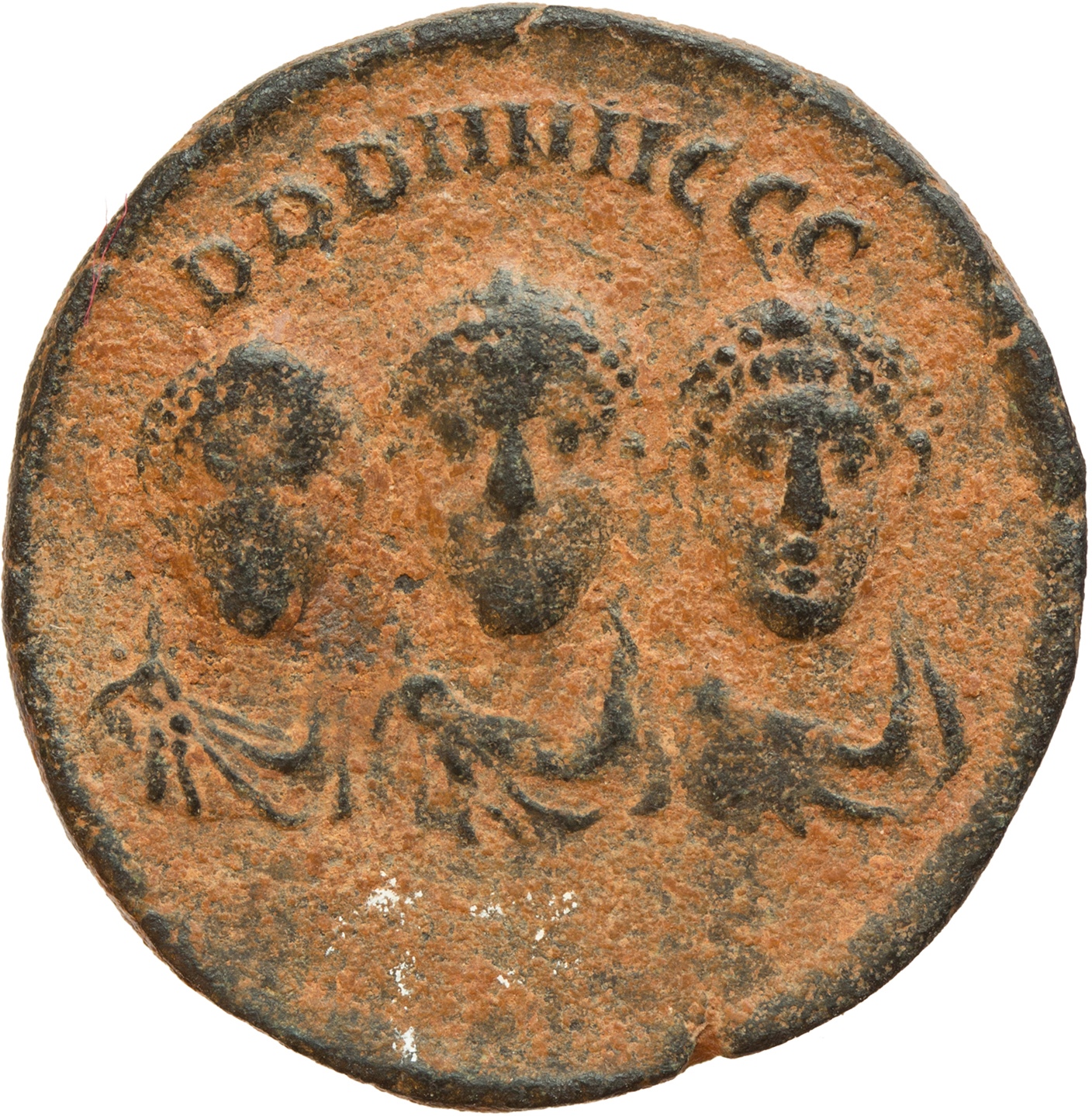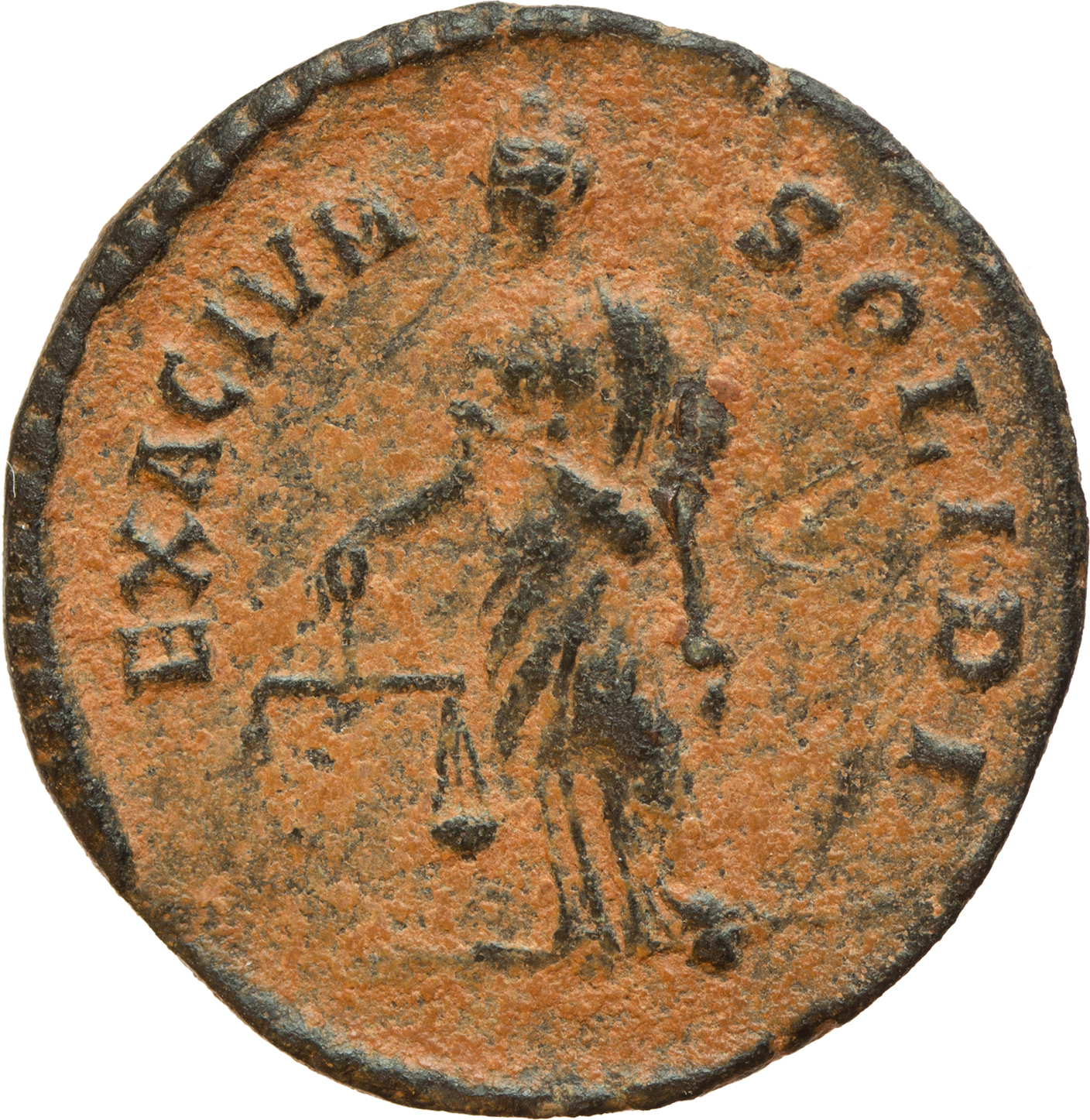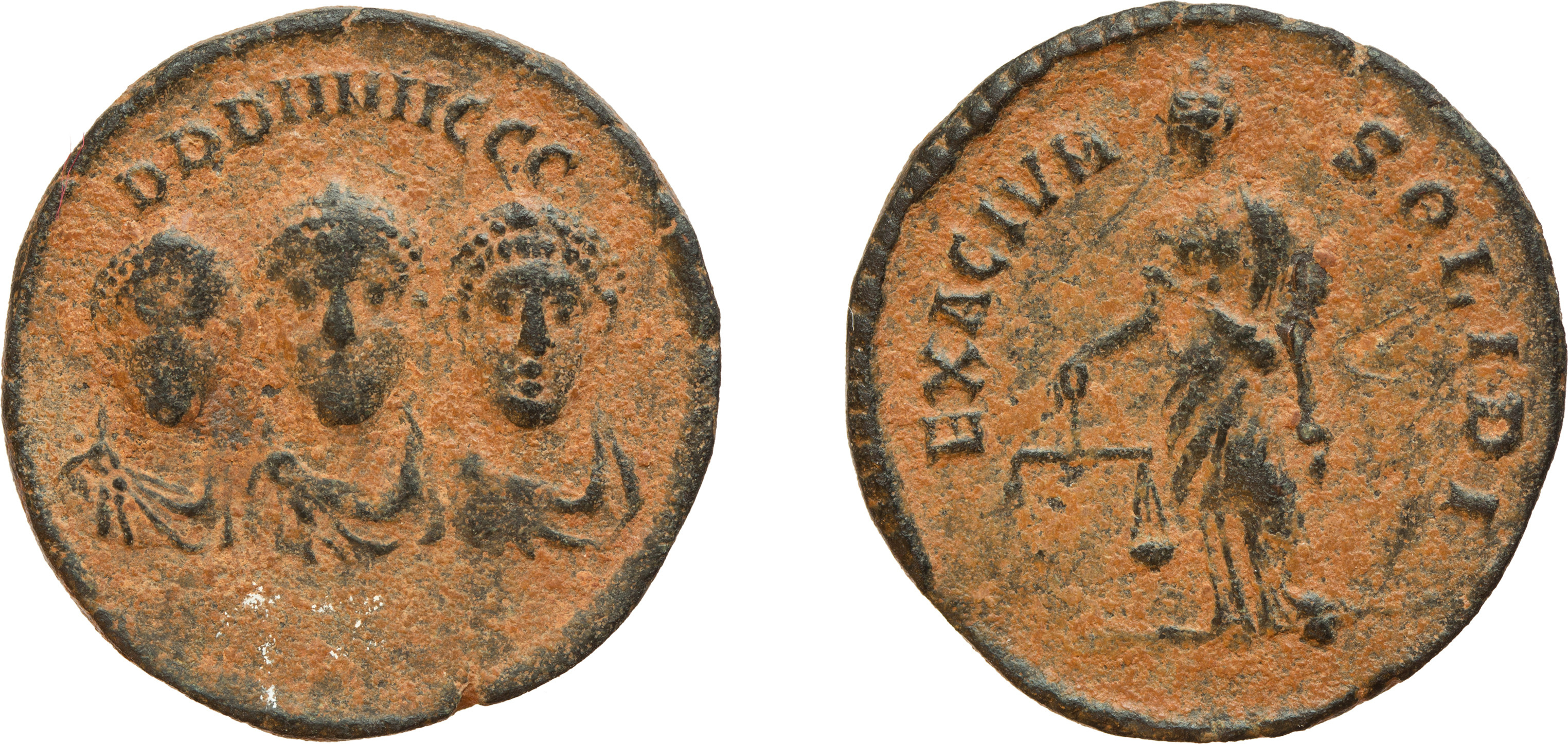
-
Copyright credit: Bendeguz Tobias

-
Copyright credit: Bendeguz Tobias

-
Copyright credit: Bendeguz Tobias

ARCHAEOLOGICAL DESCRIPTION OF THE WEIGHT
Authority
Arcadius, Roman Emperor
;
Honorius, Roman Emperor
;
Theodosius II, Roman Emperor
;
Theodosius I, Roman Emperor
Mint
Rome
Denomination
1 Nomisma = 1 Solidus
Material
Copper alloy (bronze or brass)
Manufacture
Struck
Shape
Disc or similar (ellipse, etc.)
Length
1.98 cm
Width
1.98 cm
Height
0.21 cm
Metrology
| Mass (g) | Mass (grain) | Date of measurement | Reference | fragmented | cleaned | reference weight |
|---|---|---|---|---|---|---|
| 4.32 | - | - | Measured by Bendeguz Tobias | No | No | Yes |
Iconography
| Symbol | Technique | Direction | Position | Number | Synecdoche |
|---|---|---|---|---|---|
| Roman Emperor | Stamped / Countermarked / Struck | FACING | Three | Bust | |
| Aequitas / Justitia / Moneta | Stamped / Countermarked / Struck | LEFT | Standing | One | |
| Roma | Stamped / Countermarked / Struck | LEFT | Standing | One | |
| Balance scale | Stamped / Countermarked / Struck | One | |||
| Rotulus | Stamped / Countermarked / Struck | One |
Wear
Corrosion
Handle
No
Suspension hole
No
Recarved mould
No
Recarved weight
No
Intentionally destroyed
No
Archaeological description
Auction CNG 2012: Lot 1735. Theodosius I, with Arcadius and Honorius. AD 379-395. Æ Exagium Solidi Weight (20mm, 4.32 g, 12h). Constantinople mint. Struck circa AD 402-408. DDD NNN GGG, diademed and draped facing busts of Honorius, Theodosius, and Arcadius respectively / EXAGIVM SOLIDI, Moneta standing left, holding scales and cornucopia. Cf. Göbl, Antike 228-9; RIC X, p. 8. VF, dark brown patina, red earthen deposits. Rare. During the later Roman Empire, coin weights began appearing with the legend exagium solidi, a phrase which has often been translated as “the weight (or weighing) of a solidus”, in order to deal with the practice of clipping. Exagium derives from the Latin exigere (lit. “to drive out”). However, extant examples of these weights vary and some weigh much less than the 4.5 g of a full-weight solidus. These lighter weights are thought to possibly represent the lowest acceptable weight for aurei, and were used to withdraw under-weight solidi from circulation and thereby maintain an acceptable weight standard minimum for solidi to circulate at full value.
Asolati 2022: Exagia solidi imperiali con indicazione esplicita della funzione: Arcadio, Onorio e Teodosio II, 403–408 d.C., exagium solidi. Zecca non indicata: Roma (?). D/ DDD NNN GGG; tre busti frontali, affiancati, diademati, drappeggiati e corazzati: quello a s. di dimensioni minori. R/ EXAGIVM SOLIDI; Roma come Moneta/Aequitas/Iustitia, turrita, stante a s. con bilancia e rotolo. a. CNG, Auction 90 (23/05/2012), lotto n. 1735: g 4,32: mm 20; h 12.
Asolati 2022: Exagia solidi imperiali con indicazione esplicita della funzione: Arcadio, Onorio e Teodosio II, 403–408 d.C., exagium solidi. Zecca non indicata: Roma (?). D/ DDD NNN GGG; tre busti frontali, affiancati, diademati, drappeggiati e corazzati: quello a s. di dimensioni minori. R/ EXAGIVM SOLIDI; Roma come Moneta/Aequitas/Iustitia, turrita, stante a s. con bilancia e rotolo. a. CNG, Auction 90 (23/05/2012), lotto n. 1735: g 4,32: mm 20; h 12.
Autopsy
Yes
INSCRIPTION
| Language | Technique | Legend type |
|---|---|---|
| Latin | Stamped / Countermarked / Struck | Authority, Denomination, Legal status |
Fac simile
DDDNNNGGG
EXAGIVM SOLIDI
Edition
D(ominorum) N(ostrorum) (Au)g(ustorum). || Exagium solidi.
Monogram
ARCHAEOLOGICAL CONTEXT
Findspot (region)
Findspot (site)
context
CIRCUMSTANCES OF ACQUISITION
Region
City
Date of first acquisition
May 23, 2012
circumstances
Antiquities trade.
DATING OF THE WEIGHT
Curatorial Section
LATE ROMAN AND BYZANTINE
Time frame
FROM
402
TO
408
Comments on Chronology
Auction CNG 2012: proposes a production date between 402 and 408.
Asolati 2022: suggests a chronological range from 403 to 408.
Asolati 2022: suggests a chronological range from 403 to 408.
COLLECTION HISTORY
Collection
| Name | Date of acquisition | Inventory number |
|---|---|---|
| Seidl Collection (Munich) | None | 23 |
Bibliography
| Reference | Page/Column | Reference (number) | Plate / Figure | Comment |
|---|---|---|---|---|
| Auction CNG 2012a | None | 1735 | fig. | None |
| Asolati 2022 | 260 | 11a | None | None |
VARIA
Additional comment
Asolati 2022: cf. Bendall 1996, –; Entwistle 2001, p. 264, n. III.70.
Permalink
External link